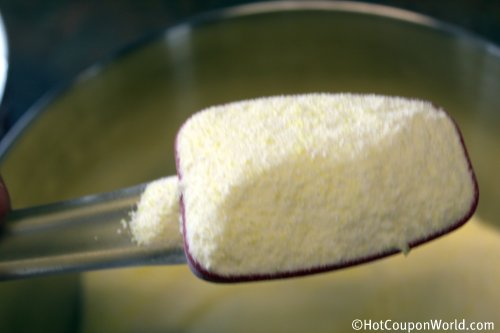DIY home Cleaning Recipes: Laundry Detergents
If you are fond of natural way of living and all commercial products are just not your cup of tea, you probably tend to make your own cleaners at home. Many natural products can help prepare efficient and inexpensive cleaners that are environmentally-friendly and therefore protect your health.
Why would you switch to home-made detergents? The reason for this is that commercial detergents contain lots of chemicals such as phenols, sulphates, petroleum distillates and various fragrances (that are made of harmful chemicals). Making your own soap can save you all this and protect your health. Plus, you know for sure what ingredients you put in your DIY soap, whereas you can't be certain what things different companies decided to make their products with.
Using natural products can save money. What's more, DIY cleaners are non-harmful and easy to use. If you are wondering how you can make your own laundry detergent at home, you have landed on the right page!
Here we will give you the recipe for DIY laundry detergent. Keep reading.
The good news is the process of making a laundry detergent is fast and easy. You don't need a lot to start making one right now!
What you need:
- Borax
- Washing soda
- Bar soap
- Two tablespoons of baking soda (optional)
Borax and washing soda are very easy to find at local stores. Natural bar soaps are available in every store or even online. You can find them in the organic, beauty and health sections of a store.
How to make liquid laundry detergent?
№1 Take one bar of soap and grate it with food processor or cheese grater. In a pan, add two quarts of water and the grated soap. Heat the stove gradually, while constantly stirring the mixture. When the soap is dissolved, remove from heat.
№2 Fill a bucket with 4.5 gallons of hot water and add one cup of washing soda and one cup of borax. Stir well and wait for he mixture to dissolve completely. Next, add the soap mixture that you left in the pan into the bucket. Stir again. Cover the bucket and let sit overnight.
№3 In the morning, shake the mixture and stir once again. Keep stirring until it becomes smooth. After that pour the liquid into containers or jugs. When using the laundry detergent to wash your clothes, pour ½ or 1 cup of the powder per load.
How to make powdered laundry detergent?

№1 In a food processor, grate one bar of soap until finely ground. Or use cheese grater to obtain the same effect.
№2 Next, mix two parts of Borax with two parts of washing soda and one part of the grated soap. If you wish, you may also add a couple of spoons of baking soda. Store in a container. Make sure it is well closed.
№3 If you intend to use a larger container, skip the bowl and put all ingredients in the container instead. Shake well.
№4 Now you can use the powdered detergent to do the laundry. Use either 1/8 or ¼ of cup per load.
There is a variety of soaps you can use to make both liquid and powdered laundry detergents. For example, Dr. Bronner's soaps are a great choice. They are available in a number of natural scents like peppermint, tea tree, almond, lavender and others, plus they are made with organic oils and vegetable soap.
If you do some calculations, it turns out that these recipes can save half on the laundry bill. This is enough reason to give home-made laundry detergents a consideration.
Author Bio: Connie Jameson recommends the same methods to be used in domestic rug cleaning for green and effective results.


0 Comments
Recommended Comments
There are no comments to display.